
Network Appliance, which initially focused on network-attached storage (NAS), in recent years has moved toward offering a broader spectrum of storage technologies and capabilities, including iSCSI and SAN.
The move apparently is paying off. In its second quarter of fiscal 2004, whichended November 18th, NetApp’s revenue rose 28 percent to US$275.6 million, up from $215.2 million four months prior. The Sunnyvale, California-based company credited multiple forces for its performance, such as increased sales of its entry-level FAS systems, success of its ongoing iSCSI initiatives, and expansion of its SnapLock solutions for regulated and permanent data storage.
Recently, the E-Commerce Times spent some time catching up and looking ahead with Dave Hitz, a co-founder of the company and its executive vice president of engineering.
E-Commerce Times: How does Network Appliance view and target its market?
Dave Hitz: We actually, over the past couple of years, have undergone a major transition in how we view the market. From the beginning, we were focused entirely on network-attached storage — storage that people access over Ethernet. Our business was, “We want to put all your storage on the Net,” and the World Wide Web came along and everybody in the world was saying, “How can we put all of our storage on the Net?” We raised our hands and said, “Well, it just so happens…”
Up to 2000 … our growth rate was just about doubling every single year. The lowest growth we had from the beginning of our company through the tech crash was 70 percent year over year. That was the low number.
At that point, the tech crash hit. We’d been selling to all these Internet companies. Ever since then, we’ve basically been in rebuilding mode. What’s exciting to us is, we are coming back to the same levels of revenue we had at that peak and to the same levels of profitability we had at that peak. But the key difference is … today, the bulk of our revenue is [from] the much more traditional enterprise market.
Business-wise, we’re feeling so good. An awful lot of companies that started in the early ’90s and doubled every year through the dot-com era are dead now. I have a simple analogy of how to be proud of something like that: If you’re a surfer and you see the world’s biggest wave coming at you, you shouldn’t be proud of the wave. You didn’t make it. On the other hand, if you’re a surfer and you see the world’s biggest wave coming at you, and you manage to ride that wave and if, at the end, you’re still alive, you can be proud of having taken that trip. I kind of feel like the wave lifted us up and set us down someplace else and now it’s our opportunity to play in this new space.
ECT: What sort of trends are going on in storage technology right now, and how is NetApp maneuvering as a result of those trends?
Hitz: We started with a focus on network-attached storage over Ethernet.[But] we shouldn’t view our competition just as people selling NAS. We should view our competition as whoever else is out there selling storage, whether it’s EMC, IBM or Hitachi, whether they’re selling NAS or not. One of our key engineering initiatives over the past three years has been to get into the SAN space. That’s been really successful for us. Now we play in two different domains: One is network-attached storage over Ethernet, or NAS, and the other is SAN, which is storage accessed over Fibre Channel.
In fact, the thing that we see as being critical is, NAS and SAN have all of these technical differences, [but people] don’t really care about the technical details of NAS and SAN. They just want to go buy them from a vendor who can sell them both and it works well together.
The best analogy for understanding this in the storage world is to look at what happened in the networking world about 10 years ago. When Cisco started, Cisco was not a networking company. They were a router company. There were other companies like Bridge Communications, and they were not a networking company. They were a switch company. If you listened to Cisco, every networking problem [was] a router problem and you should only buy routers. Same thing with Bridge for switches.
Eventually, Cisco said, “Maybe they are a little different. Maybe we should have both.” And if you look at what it’s evolved to, you now have these things called Layer 7 switches and Layer 4 switches. Well, Layer 7 used to be the definition of a router. So what does it mean, a Layer 7 switch? What it means is, we got to the point of complete convergence between switches and routers. It has to be a really, really technical person these days to tell you what the difference was.
The bottom line is, as a manager you don’t care. You just buy it. In the end, the only difference today between NAS and SAN that a manager cares about is whether they’re investing capital assets in Fibre Channel-related equipment or capital assets in Ethernet-related equipment.
Here’s the beauty of our equipment today: All of the boxes we ship, you can attach to Fibre Channel and they work fine. The exact same stuff, the same box, you can attach to Ethernet and it works fine. And if you change your mind, then you can change the attachment. You never have to have that conversation with your boss about how you thought Ethernet could save you a lot of money so you bet on it, but now it turns out you need Fibre Channel and you need another big capital [outlay]. That’s not the conversation you want to have. You don’t want to make a bet.
The transition from tech company to enterprise company; the transition from NAS-only to a NAS and SAN company; and then this whole idea of the convergence of NAS and SAN to where customers don’t have to care anymore: Those are the big threads that I wanted to paint so far.
ECT: So, looking ahead, do you expect NAS and SAN will continue to evolve and grow, or is there another type of storage that’s up-and-coming?
Hitz: I think one thing that is going to change that will make things very interesting is iSCSI.
In general, people have tended to use SAN for a lot of applications, like Exchange, like SQL Server, the Windows applications, sometimes for Oracle. But … you’ve got a real value mismatch.
Think about why somebody chose Microsoft. Why would somebody choose to purchase SQL Server from Microsoft running on Windows running on a Dell system instead of purchasing Oracle running on a Sun server or an IBM server running on Solaris? They don’t do it because they think SQL Server’s going to be faster. Or because they think it’s going to be more reliable. Or because they think it’s got features that Oracle doesn’t have. They’re doing it to save money. That is the only reason.
If you compare that value proposition to the value proposition of Fibre Channel SAN, if you look at where people have deployed Fibre Channel SANs, typically it’s high-end enterprise applications. They want very high reliability. They want very high performance. And they’re willing to pay money to get those things. When someone’s installed a big Fibre Channel SAN, they’re getting the reliability. But they’ve paid. You very seldom hear them say how much money they’ve saved. When you look at that side of it, you say, “Wait a minute. The only reason you chose Microsoft SQL Server running on Dell was to save money, and now you’re going to attach it to Fibre Channel?” It’s just a complete mismatch.
On the other hand, if you look at the value proposition of iSCSI, iSCSI says, “Look, it’s the same old protocol that works with SAN. Never mind the technical details, but it’s basically that same old SAN protocol except we’re going to run it over the cheap Ethernet.” You’ve already got the Ethernet infrastructure. Every PC you buy comes with Ethernet built in. There are no new switches to buy. There are no new cards to buy to plug into the PC. There’s no extra management software to buy because Microsoft understands this value proposition and they’re making iSCSI a free part of Windows, available today. Not only that, but it’s so important to them they retrofitted it to earlier versions of Windows. Download it for free. You can get all this stuff for free and fire it up.
NetApp is pushing very hard, working very closely with Microsoft, and has been in the lead the whole way with iSCSI. It fits our history so well: It’s data accessed over Ethernet.
ECT: Did that call for a large investment of money or time on NetApp’s part?
Hitz: Here’s the good news. We made a commitment to go do the Fibre Channel stuff. So we’re doing both SAN and NAS anyway. All of the work with iSCSI really was going and retrofitting that Fibre Channel stuff back in the Ethernet world. Well, guess what? We grew up in the Ethernet world. For us, SAN was the big decision and the big investment. iSCSI was a no-brainer. It’s a very good fit for us.
We’d already invested in SAN, so SAN plus our history got us iSCSI for free. And that’s why we’ve been so early and really a market leader there.
ECT: How do acquisitions fit into Network Appliance’s growth strategy?
Hitz: We have grown our technology base through acquisition several times, [but] we have never done an acquisition that has got us new market share from a revenue perspective.
If you look at growing by acquisition — EMC, obviously, has been doing that — there’s a key strategic difference between NetApp and EMC and how we view the world. EMC has the number one market share in enterprise storage. They’re not for storage across the entire spectrum. They don’t sell internal storage in PCs. But if you look at storage being sold to high-end enterprises, EMC’s the market share leader. If you’re the leader, what do you do? You have to find a new market.
NetApp already expanded from just NAS into storage as a whole. We’re not looking to expand into, “Oh, we should go buy Legato and get into the backup space.” Our goal is to increase our footprint in [our] existing target market — the storage target market. To accomplish that, we want to work as much as possible with partners in open standards to cover the set of stuff that EMC says, “We’re going to buy all the pieces ourselves.” The key benefit that our customers tend to point at: We’ve got a single operating system that works across our entire product line, all the way from the lowest-end to the highest-end systems.
If you look at EMC, they have one operating system for the Clarion line, one operating system for the Symmetrix line, one operating system for their NAS gateway line, a different operating system for the Solera product, and now they’ve announced a relationship with Microsoft to ship Microsoft’s SAK. You’re shipping five different OSes. You can’t go from NAS to SAN without shifting OSes. You can’t go from low-end to high-end without shifting OSes. The thing that businesspeople care about … is cost of ownership.
ECT: Is that simplicity the impetus behind NetApp’s name as well?
Hitz: We value this concept of a single box. We put “appliance” in the name. I mean, what’s an appliance? It’s just a box that does one thing. It’s like using your toaster to make toast instead of trying to make toast in your oven. You know what? It comes out better every time. The reasons we value simplicity had to do with how good a job we could do; it had to do with technical elegance. There’s almost a mathematical beauty to simplicity.
And guess what? It turns out that businesspeople do not care about technical elegance or mathematical beauty. For a while we kind of abandoned simplicity as a big push. It’s not that we didn’t care about it. As an engineering company we did, but in terms of engaging the market — appliance was still in our name, but it wasn’t a big push.
What’s happened in the past few years — and I think it’s the tech downturn that really caused this — [is that] people have started focusing on money. And simple is less expensive. We went out to try to sell to a lot of these enterprise guys toward the end of the dot-com boom. I was on some of these calls with Tom Mendoza, our president, and we’d go talk to the CIO of some giant: Morgan Stanley, Goldman Sachs — both of those are our customers now — and they’d say, “Okay. Let me guess. You can do everything we can already do and you can do it cheaper?” And we’d say, “Yes.” And they’d say, “We don’t care.”
How can a company not care? Well, if you were a CIO back in the late ’90s, you had two main goals: Goal one, your company’s growing like gangbusters and if the IT infrastructure [suffers] your gross drops and you’re in deep trouble. Goal two, everything in the world is going Internet, and if you can’t get your stuff on the Internet then your company’s in big trouble. Cost is not on your top list.
ECT: Not then.
Hitz: But then, wham, the economy slams and all of a sudden everyone’s number one goal is: “Oh my God, I’ve got to save money.” We’ve had a lot of customers tell us, “We’ve done all we can to squeeze money out of the hardware vendors. Bottom line now is we can’t drive costs any lower unless we can manage more stuff with less people. It’s got to be simple. We don’t want a team of all these different people managing all this different stuff.”
I guess we did the right things for the wrong reasons. But I’ll take that!
ECT: Now that the economy is picking up again, do you think that, having had a taste of simplicity and cost savings, CIOs will continue spending on this type of network storage?
Hitz: Economic downturns create an opportunity for fundamental realigning in the computer industry. If you look at the early ’80s, Digital Equipment was invincible. Then the economy wasn’t so hot, and people started saying, “Well, maybe a workstation would be good enough.”
Once people get a taste of this newer, cheaper stuff that solves their problems just fine, they don’t need to go back to spend more money. The technology we’ve got solves the problems they need solved.
ECT: Where does Linux fit into Network Appliance’s vision?
Hitz: We’ve been working with Linux for a long time, and we see a big transformation in who it’s going to help. Until now, Linux has been most successful in technical types of environments, scientific computing. That was really the market that proved this stuff out from the big storage perspective.
Oracle is the key driver saying, “You know what? Since this works so well for technical, why shouldn’t it work for big Oracle applications?” I talk to a lot of [people], and if I’m with an audience made up of guys in suits and ask them, “How many of you are ready to run Oracle on Linux?” I’ll tell you not many hands go up.
I will tell you one city where all the hands go up: New York City. The reason is the financial business: Morgan Stanley, Citibank. All of those guys are starting to use Linux. A lot of these guys have said, “We’re past the testing stage. We’re past the early adoption stage. We are going to be deploying this stuff big-time over the next year or two.” The financial industry is often the cross-over point between technical and commercial.

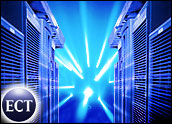

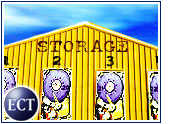

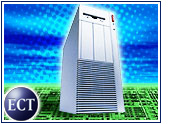






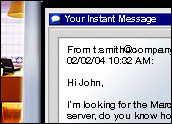
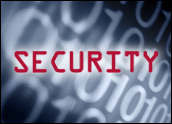
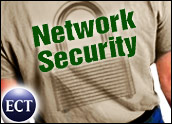








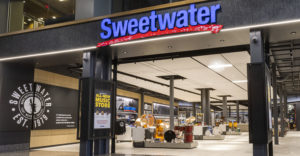


































Social Media
See all Social Media